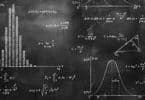Quiz on Electromagnetic Waves:
Which of the following is electromagnetic waves?
(a) X -rays and light waves
(b) Cosmic rays and sound waves
(c) Beta rays and sound waves
(d) Alpha rays and sound waves
Radio waves diffract around buildings although light waves do not. The reason is that radio waves
(a) Travel at a speed greater than c
(b) Have much larger wavelength than light
(c) Carry news
(d) Are not electromagnetic waves
Energy stored in electromagnetic oscillations is in the form of
(a) Electrical energy
(b) Magnetic energy
(c) Both (a) and (b)
According to Maxwell’s hypothesis, a changing electric field gives rise to
(a) An e.m.f.
(b) Electric current
(c) Magnetic field
(d) Pressure radiant
Maxwell’s equations describe the fundamental laws of
(a) Electricity only
(b) Magnetism only
(c) Mechanics only
(d) Both (a) and (b)
In which one of the following regions of the electromagnetic spectrum will the vibrational motion of molecules give rise to absorption?
(a) Ultraviolet
(b) Microwaves
(c) Infrared
(d) Radio waves
A signal emitted by an antenna from a certain point can be received at another point of the surface in the form of
(a) Sky wave
(b) Ground wave
(c) Sea wave
(d) Both (a) and (b)
A TV tower has a height of 100 m. The average population density around the tower is 1000 per km6. The radius of the earth is 6.4 x 106 m. The population covered by the tower is
(a) 2 x 106
(b) 3 x 106
(c) 4 x 106
(d) 6 x 106
The frequency of a wave is 6 x 1015 Hz. The wave is
(a) Radiowave
(b) Microwave
(c) X-ray
(d) None of these
Which of the following electromagnetic waves has the minimum frequency?
(a) Microwaves
(b) Audible waves
(c) Ultrasonic waves
(d) Radiowaves
Television signals broadcast from the moon can be received on the earth, while the TV broadcast from New York cannot be received at places about 100 km distant from New York. This is because
(a) There is no atmosphere around the moon
(b) Of strong gravity effect on TV signals
(c) TV signals travel straight and cannot follow the curvature of the earth
(d) There is an atmosphere around the earth
What is an ozone hole?
(a) Hole in the ozone layer
(b) Formation of ozone layer
(c) Thinning of the ozone layer in the troposphere
(d) Reduction in ozone thickness in the stratosphere
Radio waves and visible light in vacuum have
(a) Same velocity but different wavelength
(b) Continuous emission spectrum
(c) Band absorption spectrum
(d) Line emission spectrum
If a source is transmitting an electromagnetic wave of frequency 8.2 x 106 Hz, then the wavelength of the electromagnetic waves transmitted from the source will be
(a) 36.6 m
(b) 40.5 m
(c) 42.3 m
(d) 50.9 m
TV waves have a wavelength range of 1-10 meters. Their frequency range at MHz is
(a) 30-300
(b) 3-30
(c) 300-3000
(d) 3-3000
Which of the following rays has the maximum frequency?
(a) Gamma rays
(b) Blue light
(c) Infrared rays
(d) Ultraviolet rays
The approximate height of the ozone layer above the ground is
(a) 60 to 70 km
(b) 59 km to 80 km
(c) 70 km to 100 km
(d) 100 km to 200 km
The region of the atmosphere above the troposphere is known as
(a) Lithosphere
(b) Uppersphere
(c) Ionosphere
(d) Stratosphere
The intensity of gamma radiation from a given source is I. On passing through 36 mm of lead, it is reduced to I/8. The thickness of lead which will reduce the intensity to I/2 will be
(a) 18 mm
(b) 12 mm
(c) 6 mm
(d) 9 mm
The oscillating electric and magnetic vectors of an electromagnetic wave are oriented along
(a) The same direction but differ in phase by 90°
(b) The same direction and are in phase
(c) Mutually perpendicular directions and are in phase
(d) Mutually perpendicular directions and differ in phase by 90°
Which scientist experimentally proved the existence of electromagnetic waves?
(a) Sir J.C. Bose
(b) Maxwell
(c) Marconi
(d) Hertz
The pressure exerted by an electromagnetic wave of intensity I (watts/m2) on a nonreflecting surface is [c is the velocity of light]
(a) Ic
(b) Ic2
(c) I/c
(d) I/c2
Which one of the following is not electromagnetic in nature?
(a) X-rays
(b) Gamma rays
(c) Cathode rays
(d) Infrared rays






